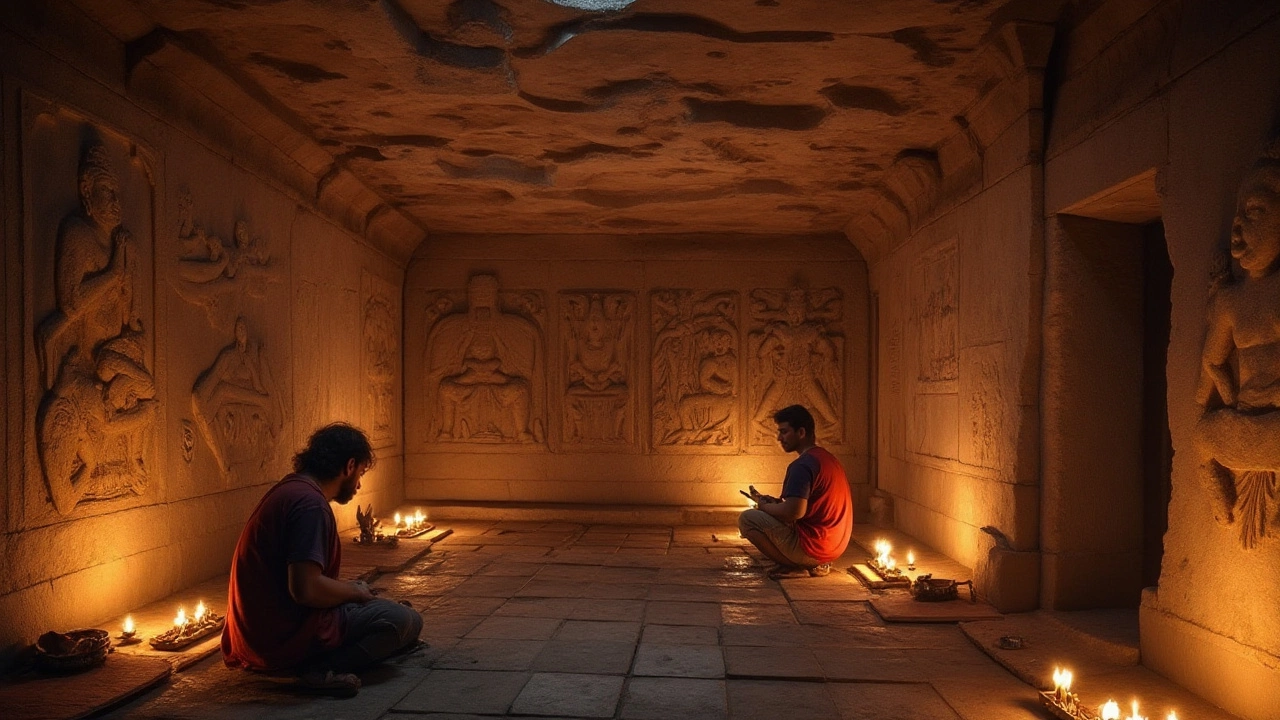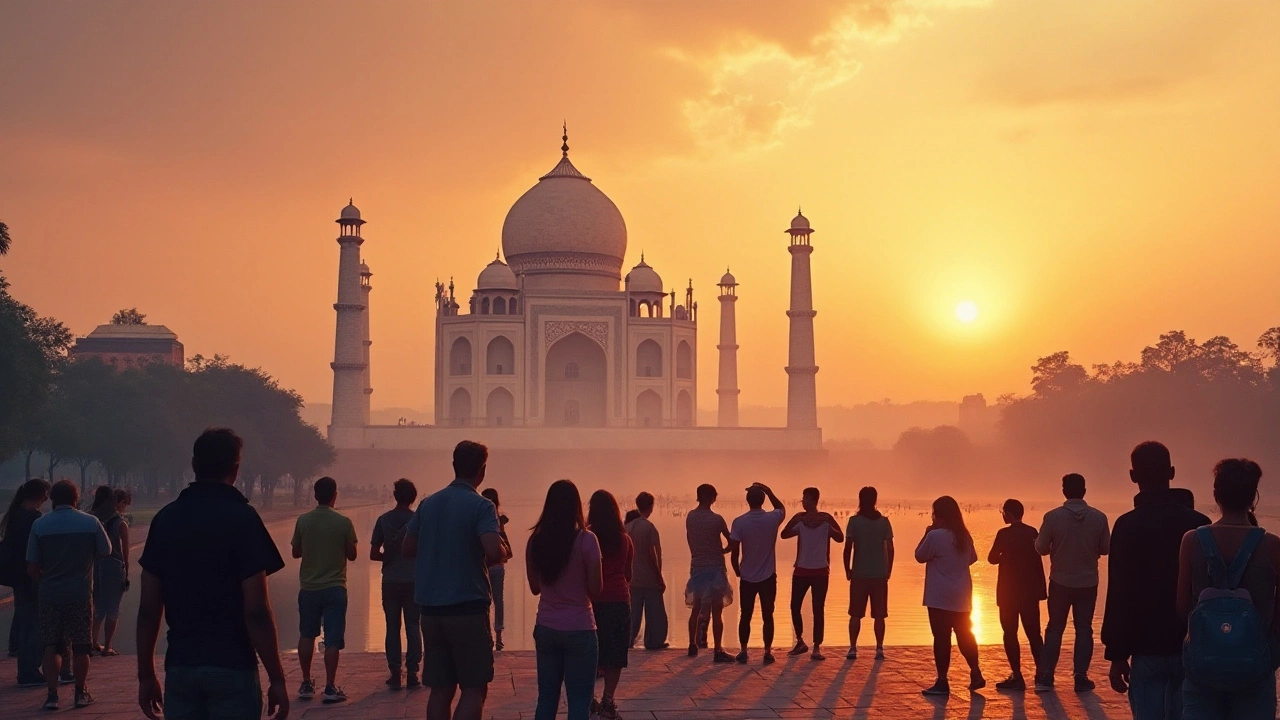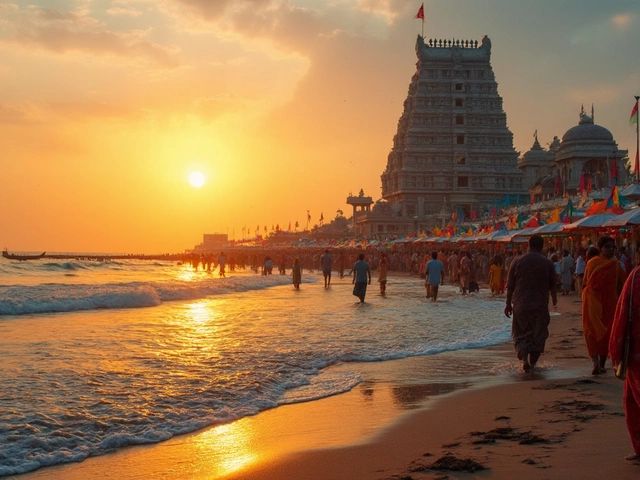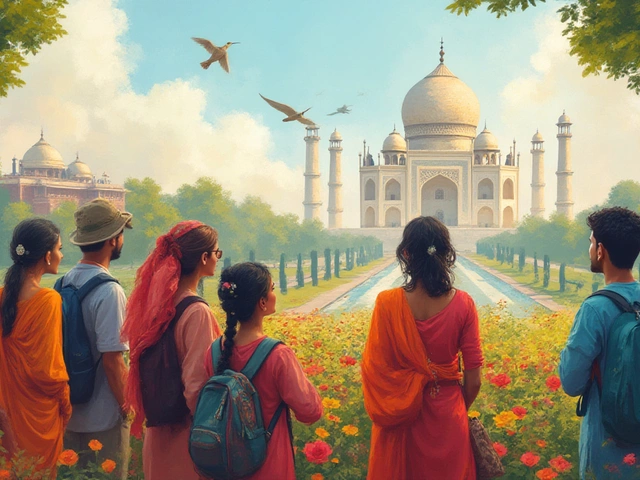When we hear UNESCO, we often think of world heritage sites, places that hold history and majesty in every corner. However, UNESCO stands for much more than an accolade. It is part of the United Nations, striving to preserve and recognize the cultural and natural heritage of our shared world. In a nation as culturally diverse as India, UNESCO's role becomes even more crucial, spotlighting the country's array of magnificent sites.
India's heritage is a colorful tapestry, woven with threads of its dynamic history and vibrant cultures. Through UNESCO's World Heritage designation, sites across India are immortalized, offering a window into the past. From the intricate carvings of Khajuraho to the serene beauty of Kerala's Western Ghats, each site is a chapter in India's story.
This article invites you on a journey through the land of India, exploring how UNESCO plays a pivotal role in preserving its heritage and what criteria are involved when selecting these sites. You'll also get tips on visiting these spectacular locations, along with insights into the challenges they face in today's rapidly changing world. Join us as we dive into the heart of India through its treasured sites.
- Understanding UNESCO and its Mission
- Criteria for World Heritage Site Selection
- Significance of UNESCO Sites in India
- Notable UNESCO Heritage Sites in India
- Challenges and Preservation Efforts
Understanding UNESCO and its Mission
The United Nations Educational, Scientific and Cultural Organization, known universally as UNESCO, was founded in the aftermath of World War II in 1945. Its inception was rooted in the belief that political and economic agreements alone were not enough to build a lasting peace. UNESCO aimed to foster collaboration among nations through education, science, culture, and communication. Over the decades, its mission has evolved, but at its core lies the conviction that the preservation of cultural and natural heritage forms the bedrock of a global community enriched by diversity. UNESCO actively recognizes and protects sites for future generations, emphasizing humanity’s collective responsibility towards our shared heritage.
Throughout its history, UNESCO has been a beacon of hope and progress for countries striving to preserve their identities amidst globalization and technological advancement. The organization currently represents 195 member states, each contributing to a tapestry of global cooperation. Its mission is not limited to heritage alone; it also focuses on freedom of expression, fostering education for all, and advocating for sustainable development. Every year, UNESCO convenes the World Heritage Committee to evaluate and designate new sites, maintaining a dynamic list of world treasures that not only hold historical significance but are also living examples of cultural diversity.
In the sphere of heritage sites and preservation, UNESCO's work is often most visible. The World Heritage List, a hallmark of its efforts, includes properties of exceptional universal value. These range from the Acropolis of Athens to the Great Barrier Reef in Australia. Adopting rigorous selection criteria, UNESCO ensures that each site on the list possesses attributes that extend beyond national borders, influencing a significant portion of humanity's heritage. “Culture is the lens through which we see the world,” stated UNESCO’s former Director-General Irina Bokova, highlighting the necessity of international partnerships to ensure these treasured sites endure.
The Specific Role of UNESCO in Heritage Conservation
One of UNESCO's most defining roles is the identification and protection of World Heritage Sites. By establishing clear criteria and operational guidelines, the organization upholds standards that member countries strive towards. Additionally, the World Heritage Fund supports conservation initiatives, often acting as a lifeline for sites at risk due to natural disasters or human-induced threats. To date, the World Heritage Committee has inscribed over 1,100 sites worldwide, with new nominations reviewed annually. This dynamic process ensures UNESCO’s mission remains relevant, evolving in response to global challenges such as climate change and urban development.UNESCO's strategy includes capacity building, resource mobilization, emergency measures, and international cooperation. It doesn't just protect monuments and landscapes but also advocates for local communities, recognizing them as guardians of their environment. For many countries, especially those with less financial capability, UNESCO's support becomes crucial in safeguarding treasures that might otherwise be lost. Through programs like the UNESCO Global Geoparks and Biosphere Reserves, the organization further emphasizes sustainable development, aiming to marry economic viability with ecological integrity.
A snapshot of influential data highlights UNESCO's impact. In 2023, out of 270 World Heritage Site nominations, 45 new sites were added, reflecting an ongoing commitment to protection amid a tumultuous world. From the historic cityscapes of India to the verdant rainforests of the Amazon, these sites capture the essence of our planet's diversity. Despite challenges, UNESCO's mission remains timeless: fostering collaboration across borders through the preservation of knowledge, beauty, and shared heritage.
Criteria for World Heritage Site Selection
Understanding what qualifies a site for UNESCO World Heritage status involves a deep dive into an intricate process laced with historical, cultural, and natural significance. UNESCO has outlined specific criteria that aim to discern which sites hold universal value to humanity. These guidelines serve as a global benchmark to ensure that each designated site exemplifies something profoundly unique. Among the ten criteria established by UNESCO, a site must meet at least one to be considered. These range from representing a masterpiece of human creative genius, to exhibiting outstanding examples of architectural ensemble or technological ensemble, to featuring exceptional natural beauty and phenomena.
For a site to be recognized, it is paramount that its value extends beyond its local or national significance. The aspiration is to celebrate those locales that resonate with humanity on a broader scale, often involving stringent evaluations by international experts. Once nominated by the concerned state, a site is rigorously evaluated by two advisory bodies: the International Council on Monuments and Sites (ICOMOS) for cultural sites, and the International Union for Conservation of Nature (IUCN) for natural sites. The evaluations consider authenticity, conservation measures, and the potential for sustainable tourism.
In elaborating on these criteria, one must not overlook the importance of cultural landscapes, which combine works of nature and humankind. Such landscapes become places of profound understanding, marrying cultural heritage with natural components. For instance, the Western Ghats in India is acclaimed not only for its biodiversity but also as a region of historical human settlements that date back millennia. A saying goes, “Heritage is our legacy from the past, what we live with today, and what we pass on to future generations.” These criteria are more than just requirements—they are a call to preserve humanity's shared history and wisdom.
As former UNESCO Director-General Irina Bokova stated, "Heritage is a rallying call for the international community. In celebrating the beauty of our common past, we strengthen the bonds of our future."
Intrinsic to the criteria is the ethos of protection and management. Sites nominated must have a management plan that showcases strategies for safeguarding and presenting the site’s values. These include evaluating the impacts of potential development and tourism growth. Today, with increasing industrialization and urban infrastructure development, the task is not without challenges. It requires a delicate balance between progress and preservation. Ultimately, education plays a pivotal role in instilling reverence for heritage values among continuous generations.
Consider the historical city of Jaipur, a relatively recent entrant to the UNESCO list. It embodies an urban planning that dates back to the 18th century, showcasing architectural mastery, traditional art forms, and advanced systems of town planning. Cities like Jaipur become icons not just due to historical allure but also because they provide insight into cultural traditions, social development, and the narrative of human history. The process of selection and protection ensures these are not merely marvels of the past but vibrant sites for future learning and inspiration, illustrating that these criteria serve as gates to preserving and sharing humanity's finest achievements.

Significance of UNESCO Sites in India
India, with its vast and varied landscape, is home to some of the most profound heritage sites on the planet. Recognized globally for their cultural and historical value, UNESCO sites in India serve as a testament to the country's rich past and its enduring legacy. These sites don't just draw tourists from far and wide; they bring with them respect, attention, and resources necessary for their sustained preservation. The recognition by UNESCO signifies a commitment to maintaining these historical edifices, ensuring they are protected from the rampant urbanization and environmental challenges that can threaten their existence.
The heritage sites in India, ranging from the awe-inspiring Taj Mahal to the ancient ruins of Hampi, encapsulate stories of past civilizations and empires. They stand as reminders of the architectural brilliance and sophisticated engineering of ancient India. The Taj Mahal, an epitome of love cast in marble, draws millions every year, providing a significant boost to local economies. Similarly, the temples at Khajuraho are more than just stunning sculptures; they are architectural masterpieces that speak of a culture that valued art and expression. The preservation efforts for these sites often employ traditional techniques blended with modern conservation methods, maintaining the authenticity and integrity of each location.
According to a UNESCO report, cultural tourism makes up a substantial part of India's tourism industry. A staggering statistic reveals that over 75% of tourists visiting these sites come from international borders. Recognizing India's heritage sites under the UNESCO banner elevates their status on the global platform, ensuring the dissemination of their rich narratives. It not only creates identity and pride among the local population but also fosters international cultural understanding and tolerance.
"Heritage is our legacy from the past, what we live with today, and what we pass on to future generations," UNESCO states, capturing the essence of why preserving these sites is critical.
Economically, the impact of UNESCO sites extends beyond tourism. These sites often become focal points for international collaboration, research, and cultural exchanges. The influx of visitors supports small local businesses, artisans, and guides, creating a ripple effect that benefits the communities surrounding these landmarks. For instance, the vibrant markets around Jaipur's Jantar Mantar or Sanchi Stupa provide livelihoods to countless families. This intersection of culture and commerce highlights an often-understated value of maintaining these treasured locations.
The recognition of these sites is a continual reminder of our duty to protect and preserve them for future generations. This importance is reflected in the transnational cooperation often seen, where countries and organizations partner to bring in the necessary expertise and funding. Efforts such as these underline the essential nature of global partnerships in cultural preservation. As you stroll through these remarkable sites, whether it's tracing the paths of the Mughal Emperors or marveling at the natural beauty of Kaziranga National Park, there lies a deeper understanding of their significance. They are not mere relics of history but vibrant stories waiting to be explored, understood, and cherished.
Notable UNESCO Heritage Sites in India
India, a land that thrives on diversity and cultural richness, boasts an impressive array of UNESCO World Heritage Sites that serve as windows to the past and symbols of our global heritage. Each site tells a unique story of the country's historical grandeur and natural beauty. Let us embark on a journey through these iconic places, each a masterpiece of human ingenuity and natural wonder.
The Majestic Taj Mahal
The Taj Mahal, standing by the serene Yamuna River, is more than just an architectural marvel; it is a testament to eternal love. Built by Emperor Shah Jahan in memory of his beloved wife Mumtaz Mahal, this white marble mausoleum is the epitome of Mughal architecture. Its perfect symmetry, the intricate inlay work of semi-precious stones, and the lush gardens surrounding it make the Taj Mahal a sight to behold. Travelers from every corner of the globe are drawn to experience its ethereal beauty, particularly under the soft glow of the moonlight.
"The Taj Mahal is the whiter shade of the love that artists seek to portray, and tourists are eager to see," said travel writer Mark Twain.
The Timeless Ajanta and Ellora Caves
Moving further into the western heartlands of India, the rock-cut caves of Ajanta and Ellora unfold tales chiseled in stone. These caves, carved between the 2nd century BCE and the 8th century CE, stand as a testament to the harmony of Hindu, Buddhist, and Jain faiths. Ajanta is renowned for its mesmerizing frescoes and sculptures that depict the life of Buddha and various Jataka tales. Ellora, on the other hand, stuns visitors with monumental caves such as the Kailasa Temple, an architectural and engineering wonder hewn from a single rock. These caves are a captivating journey through art and spirituality.
The Captivating Khajuraho Temples
The Khajuraho Group of Monuments is a spectacular exhibit of medieval Indian architecture, celebrated for its intricate carvings and sculptures. Created by the Chandela dynasty, these temples are renowned for their erotic sculptures interwoven with themes of daily life and spirituality. Built between 950 and 1050 AD, the temples stand as an ode to love, life, and creativity. Despite the passage of time, the artistry of Khajuraho continues to inspire awe as visitors explore the stories told through the elegant sandstone carvings.
The Natural Wonders of Sundarbans
Not all of India's UNESCO sites are about manmade marvels; some are treasures of natural beauty, like the Sundarbans National Park. This vast mangrove forest, spread across the delta of the Ganges, Brahmaputra, and Meghna rivers, is home to the enigmatic Royal Bengal Tiger. The intricate network of tidal waterways, mudflats, and small islands make this park a wilderness experience like no other. It is a living, breathing ecosystem where biodiversity is celebrated and preserved.
The Deep History of Hampi
In the south, the ruins of Hampi transport visitors back to the 14th century, when it was the flourishing capital of the Vijayanagara Empire. The sprawling complex, sprawling over hills and along the Tungabhadra River, houses grand temples, palaces, and market streets that echo the empire's former glory. Known for its distinct Dravidian architecture, the site serves as a living museum of history, religion, and creativity, sparking the imagination of all who wander its ancient stones.

Challenges and Preservation Efforts
The heritage sites of India, recognized by UNESCO, are marvels of history and culture that stand testament to the country's rich past. However, preserving them is a formidable task fraught with numerous challenges. These challenges range from natural deterioration due to weathering and climate change, to the overwhelming pressures of urbanization and tourism. The sheer age of many sites, such as the grand temples of south India or the ancient ruins of Hampi, makes them particularly vulnerable to the ravages of time. These structures, often built millennia ago, face a delicate balance between conservation and accessibility to the public.
One pressing concern is the impact of climate change, which has resulted in increased rainfall and severe weather anomalies, posing risks to the structural integrity of many heritage sites. The Taj Mahal, an iconic symbol of India's cultural heritage, faces threats from air pollution which not only affects its pristine white marble but also contributes to the general degradation of the monument. This highlights an urgent need to implement measures that reduce the carbon footprint and harmful emissions in the vicinity.
"Preserving cultural heritage is not only a battle against time, but also against the growing insensitivity toward the environment," UNESCO representative remarked in a recent conference.
Moreover, mounting human activities, primarily driven by tourism, require a fine balance. While tourism brings much-needed financial resources and promotes cross-cultural understanding, it can also lead to unprecedented wear and tear on these fragile sites. The Sun Temple at Konark, with its intricate stone carvings, is one such site where a surge in visitor numbers poses both opportunities and threats. Preservation efforts thus necessitate innovative solutions, such as visitor management strategies and the use of modern technology to monitor and repair delicate structures.
Ongoing conservation efforts are piecemeal and resource-dependent, often relying on collaboration between governmental bodies, international organizations such as UNESCO, and local communities. Local involvement is crucial; residents can offer invaluable insights and maintain cultural traditions that ensure these sites are not only physically preserved but also socially and culturally integrated. In areas such as the Ajanta and Ellora Caves, the integration of the local workforce has been key in the restoration of the hand-carved art and architecture that date back centuries.
Another aspect of successful preservation is education and raising awareness. Broad campaigns aim to educate both locals and tourists on the importance of protecting these precious sites. Initiatives like 'Heritage at Risk', spearheaded by UNESCO, strive to shine a spotlight on the threats to heritage sites globally, fostering a sense of collective responsibility. By equipping communities with knowledge, these campaigns hope to inspire grassroots movements dedicated to conservation efforts, ensuring that these cultural treasures are safeguarded for future generations.



